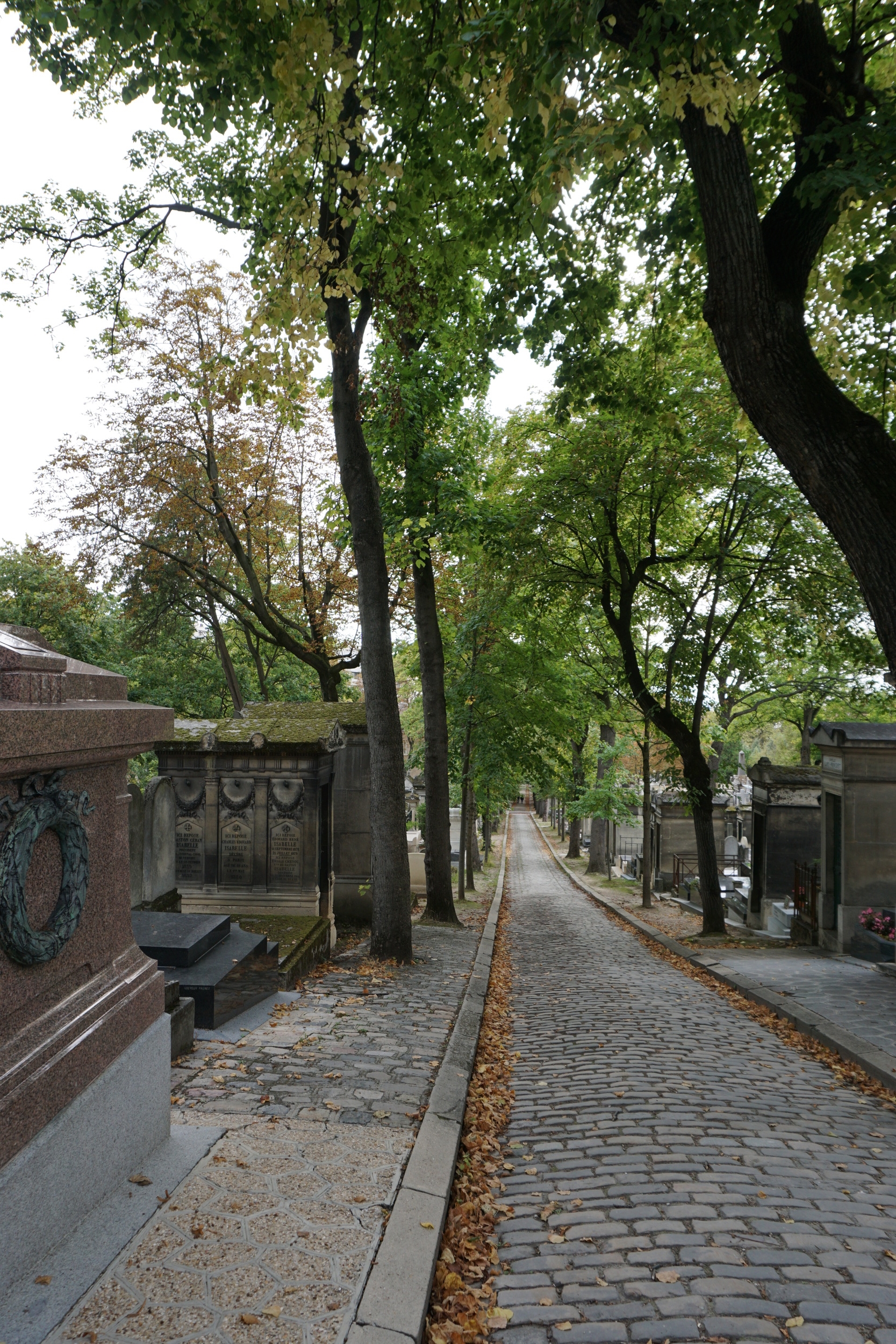As we say some people are photogenic, can we say that Paris is a city that lends itself to be well photographed?
When I looked through my pictures from these past weeks, what I noticed are the minor details of the city. The famous architectural monuments are of course beautifully designed and constructed, but what I also appreciate are the less obvious details of non-main street cafés and bakeries, in areas best known by local inhabitants.
Residence buildings and shops are created out of more wood and stone than steel and concrete. Cheese shop awnings are composed of cloths and faded lettering. Cafés have patterned wicker patio chairs. There are streets of smooth cobblestones on the ground and fine lamps above them. In the following pictures, I had hoped to show some of these details, so that you could see Paris not only in its glamour, but also in its everyday.
Père Lachaise cemetery is one of my favourite places in Paris so far. Even though it is a well known landmark, I haven't seen it overly crowded, perhaps due to its large size or its being located a bit out of the core centre.
I sometimes go there in the hour before it closes. I like walking on the cobblestones, especially for the way they can feel slippery and be uneven at parts.
I have read Poe's poem, The Raven, but it was in this cemetery where I first saw actual ravens perched on tombstones. It was hard capturing them through the lens, but apparently cats are also cemetery creatures, and they make for easier photo subjects.
Is it amusing to anyone else to see Frédéric Chopin's name shortened to Fred? Other famous people buried here include Jim Morrison, Molière, Oscar Wilde, and Marcel Proust.
A small hidden alleyway in the Marais lined with residences and shops of vibrant and pale colours.
Le Marché des Enfants Rouges is a market located in the Marais and serves Moroccan, Italian, French, and Lebanese foods. The shawarma from the Lebanese stall was made with arugula (known here as roquette, or rocket salad). My nerd brain amused itself with the language play that a bookstore is called a librairie, and a library is called a bibliothèque.
And my nerd heart is happy exploring the bookshops that seem to be everywhere, from small independent stores to the massive retailer Gibert Joseph. The one located in Saint-Michel is like a department store of books, with escalators for multiple levels. One of the first things I noticed is that many book covers and spines are white, in contrast to the colours found on the shelves of Chapters and Indigo.
37 rue de Bûcherie is the home of Shakespeare and Co, a famous bookshop that has a quirky interior and history. In addition to offering an impressive collection of English books, it also contains a number of eclectic items, such as ancient typewriters, a piano, a reading room filled with old books, and a few beds.
My friend from Bretagne (Brittany) explained that crêpes are a specialty of her region, and are typically paired with cider, even the salty ones. Strange to hear at first, but tasted delicious.
Fun name for a bagel chain eh? My friend took me here and the bagels were delicious, but I almost think half the fun came from repeating its name.'Can we go to Bagelstein?' 'When are we going to Bagelstein?' 'Let's go to Bagelstein!'
In the 11th arrondissement, rue de Lappe is one of the streets filled with an assortment of bars and boutiques.
Notre Dame is located on Île de la Cité, one of the islands in the Seine river, and can seen from many of the central bridges; this is one of the bridges covered with love padlocks. I had seen these types of locks one other time, when I lived in Korea, and I wonder if the practice originated from France. I haven't been to Japan, but I get the impression that French culture is admired there as well - there is even a condition called Paris Syndrome that occasionally affects (mainly) Japanese tourists.
The Montmartre area is home to one of the tallest hills in Paris and is known for the Sacré-Coeur Basilica, the art scene, and some seedier nightlife activities.
From the top of Montmartre.
And of course, a visit to Montmartre is incomplete without passing by the infamous Moulin Rouge nightclub.














